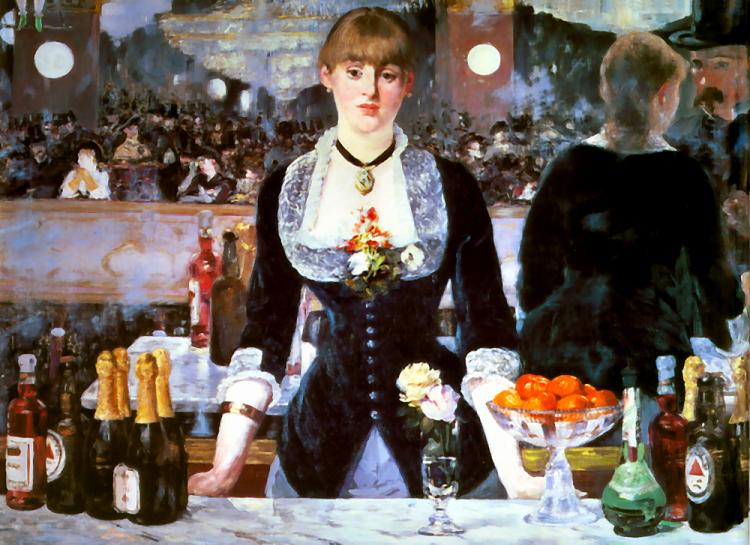A Bar at the Folies-Bergère

A Bar at the Folies-Bergère
What immediately struck me about The Bar at the Folies-Bergere is the relationship it brings to light between artists and “low life” individuals. Although at the time, Manet had become an esteemed player in the art community, there has been and to some extent still is a view of artists as in a sense, low life individuals. About a year ago, I was going to art school at Rutgers University in New Brunswick, NJ and studying Studio Arts. As someone who has always loved art and had art as a positive influence all my life, it became an environment in which I thrived and enjoyed. However, when I shared what I was studying with friends, family, or even aquaintances, the most common response was not one that was supportive, but rather one which was critical and at times disgusted. Further, when I was trying to engage in intelligent conversations with my peers, my views were often regarded as incorrect by default because I was a student of art rather than other classical subjects. In summary, I myself experienced the discrimination that artists face. I believe that to some extent, this degradation is something Manet wished to convey in A Bar at the Folies-Bergère. The painting depicts a female server who likely also acted as a prostitute. The viewer is standing in front of her (as if the artist painted the scene while at her bar). By placing the person depicting the scene in a context which assumes interaction with the server, Manet effectively places himself on the same level as her- which was not high in society. Although prostitution is a trade which has been been practiced by both elites and lower class men in society for years, the blatant interaction between the server and artist displays them as peers rather than an actor-servant dynamic. When we evaluate the impact that artists have on society (as depicted in many of the recent works we’ve seen, especially those which bring political power into question) it is an interesting phenomenon that even today artists are still seen on a level with lower-class individuals; as Manet here has depicted. In conclusion, it is essential that in the promotion of an art community at A&M, we work to emphasize the importance art (and the artists who create it) make on society. By doing so, we can slowly start to counteract the ancient prejudices which artists have been subject to so that the art and artist can gain the full respect which they deserve.


No comments:
Post a Comment